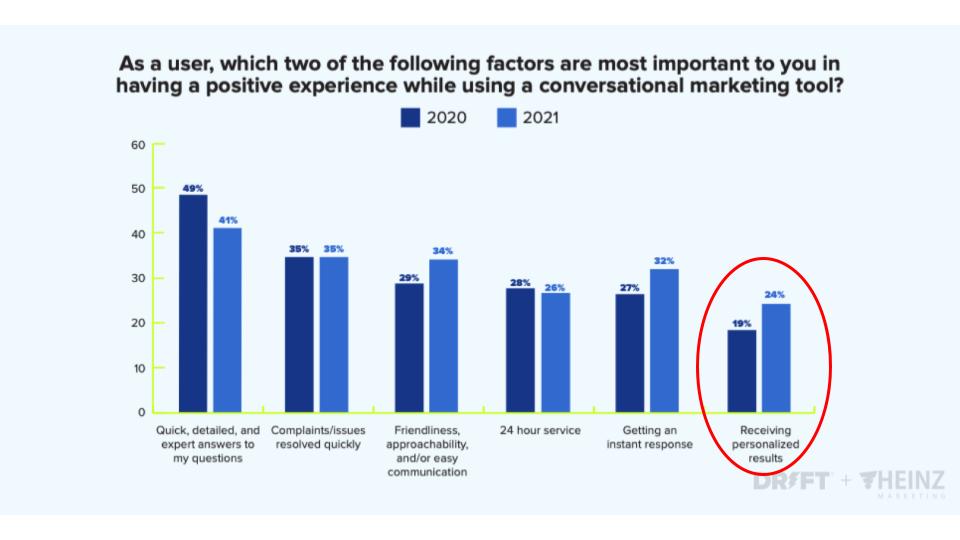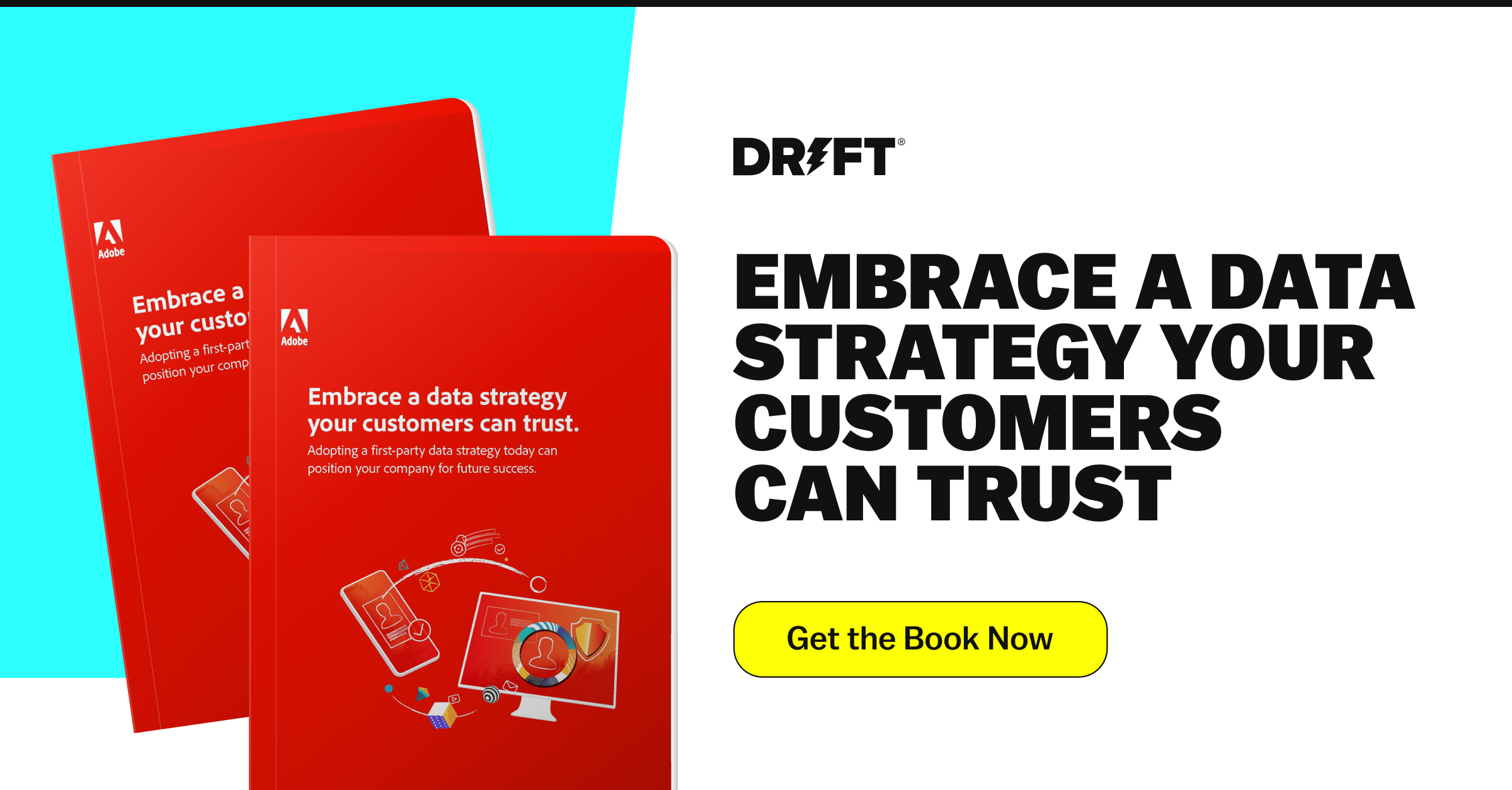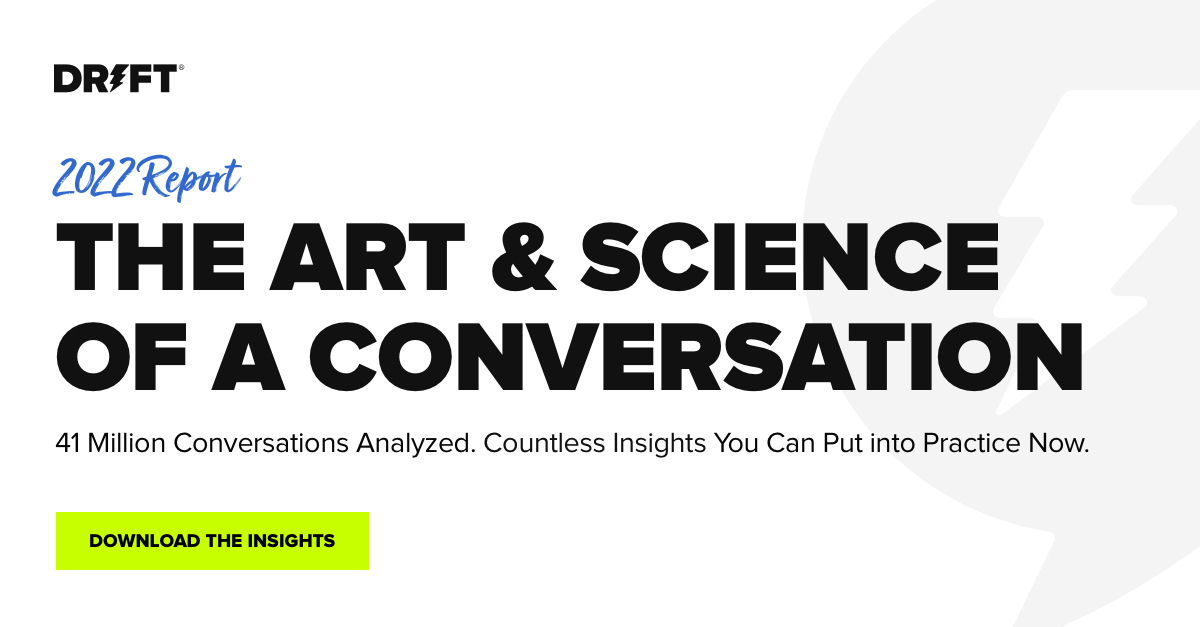The clock is ticking for any marketer who relies on third-party tracking cookies.
Last year, Google announced that it was pushing its plan to phase third-party tracking out of Chrome back to 2023. Other leading browsers, including Safari and Firefox, have been blocking third-party cookies for years.
You may have welcomed Google’s stay-of-execution with relief, as many of your fellow marketers surely did. Not everyone is prepared for a future without third-party tracking cookies.
According to a recent Adobe survey:
- 39% of marketers say they are “very reliant” on third-party tracking.
- 41% of marketers say they are “moderately” reliant on third-party tracking.
Psst! These results and more are available in a new ebook on the end of third-party cookies and the need to adopt a first-party data strategy. Drift contributed a chapter along with five other leading Adobe technology partners.
But the dawning of the New Year is a reminder that the post-cookie era is inevitable — and not that far away. It’s time to start planning new strategies for engaging website visitors with personalized, highly-relevant online buying experiences.
Should You Fear the ‘Cookiepocolypse’?
Brands use third-party cookies to collect data about potential customers, track website visitors across the internet, target ads, and personalize online experiences. However, the jury is still out on whether this form of tracking and targeting was ever truly effective.
Forbes contributor Dr. Augustine Fou noted in a 2021 article on the cookie-less future, “With 3P cookies, advertisers were misled to believe that more targeting means more relevant ads and more better business outcomes.”
Yet, when large brands have paused their ad targeting campaigns, “nothing happened.”
It appears that the “personalized experiences” promised by promoters of third-party tracking aren’t really all that personalized.
As we wrote in our chapter of Adobe’s new ebook:
“For years, marketers have relied on third-party data to target customers and deliver personalized experiences. However, 53% of buyers in Drift’s study reported being frustrated by irrelevant ads and emails from companies.”
It’s also worth recognizing why Google and other browser developers have decided to deprecate third-party cookies. It’s not because they’re concerned about your marketing results. Rather, internet users are wary of their data being used by third parties that have not built up a trusting relationship with them.
A Consumer Reports study found that nearly all Americans (96%!) say companies should do more to protect their privacy. A Pew Research study reported that 81% of Americans say the potential risks of companies’ collecting data about them outweigh the benefits.
“Customers want more visibility into and control of their data. Brands that earn customers’ trust by building transparent and ethical data strategies will have a competitive edge.”
What Do Buyers Really Want?
While buyers are getting serious about privacy, their desire for relevant, personalized experiences is stronger than ever. This is clear from the research we conducted for Drift’s 2021 State of Conversational Marketing report, which showed that buyers’ expectations for quick, personalized experiences have grown by 26% in a single year.

The COVID-19 pandemic made face-to-face interactions risky, forcing brands to adapt with digital alternatives to meet this surging consumer demand at an even faster pace. For the most part, people have loved their new digital-based buying options.
Of course, the transformation was already underway. Still, the pandemic accelerated buyer preferences for real-time, digital self-service — even in the B2B industry, where in-person interactions have dominated sales and marketing strategies for decades.
Not only does today’s buyer expect a personalized digital experience, but they expect it immediately. According to our research, the average buyer wants a response from a live chat or chatbot in five seconds or less. (About a third expect the same response time in a phone or video call.)
Where does that leave us as we contemplate a future without third-party tracking cookies? Personally, I’m excited.
The so-called “Cookiepocalypse” is an opportunity for B2B brands to focus on using first-party data to create the truly personalized (and trustworthy) experiences buyers have been demanding all along.
“As the world says goodbye to third-party data, marketers are at a crossroads. To succeed, they need fresh ways to engage with buyers and customers — in real, meaningful conversations.”
Why First-Party Data Is (and Always Has Been) Better
People find third-party tracking invasive (and even a little creepy) because they view it as a betrayal of their trust. On the other hand, most people are happy to entrust their data to organizations that have earned the right to use it responsibly.
First-party data is information potential buyers give your brand willingly because you have gained their trust.
The difference between third-party targeting and a first-party data strategy is similar to the difference between receiving an annoying telemarketing call at an inconvenient time and getting a text from a friend in a moment of need. Your immediate response to the former is “where did you get my number?” and “stop calling me.” To the latter, you think, “You’re always there for me.”
First-party data helps your brand build relationships with your customers and prospects while addressing their privacy concerns.
And because there are no intermediaries between your organization and your customers (such as a third-party data vendor), first-party data is immediate. It can be updated in real-time, giving you up-to-the-minute information for efficiently guiding your customer interactions toward a satisfying outcome for both parties.
One of the most effective strategies for capturing first-party data and creating exceptional experiences for buyers is Conversational Marketing.
Why Conversational Marketing Is Ideal for Capturing First-Party Data (and Creating Better, Faster, More Relevant Customer Experiences)
A few paragraphs above, I mentioned a friend reaching out in your time of need. Well, here’s the online marketing equivalent:
You’re perusing a B2B company’s website for information on a solution you think might help your company. You’re close to making a decision, but you still have a few questions. You download a case study, hoping to find your answers there, and in that very moment, an intelligent chatbot (or a live rep) pops in to ask if you need any help.
As you can see, this isn’t just “chat.” Virtual Selling Assistants conduct natural conversations with buyers to understand their goals, challenges, and needs. Conversational Marketing (a category spearheaded by Drift) creates instant connections directly with buyers at moments of high intent.
This is the opposite of impersonal, unreliable third-party tracking. Genuine conversation builds trust, resulting in personalized customer information that is both more valuable and applicable than anything you would get from third-party cookies.
Conversational Marketing also addresses the modern buyer’s need for speed. Website visitors can get the answers they’re seeking almost instantaneously — no need to complete bothersome forms or wait for email responses. AI-powered chatbots qualify buyers in real-time, connecting them to the right sales reps who can then use the first-party intelligence to drive productive conversations.
In short, as we wrote in our Adobe ebook chapter:
“Drift customers use a combination of chat, email, video, and automation to remove the friction from business buying and connect buyers and sellers instantly.”
This Year, Resolve to Put the Customer First
Third-party tracking cookies became so prevalent because many websites were built by marketers for marketers. The looming demise of third-party cookies demands that sellers build for their buyers.
Your customers expect personalized, real-time experiences. To deliver on that means transforming your website into an effective sales and customer resource, unifying marketing, sales, and service around first-party customer insights. Drift-powered Conversational Marketing can help you establish trust with prospective buyers while engaging on their timeline.










